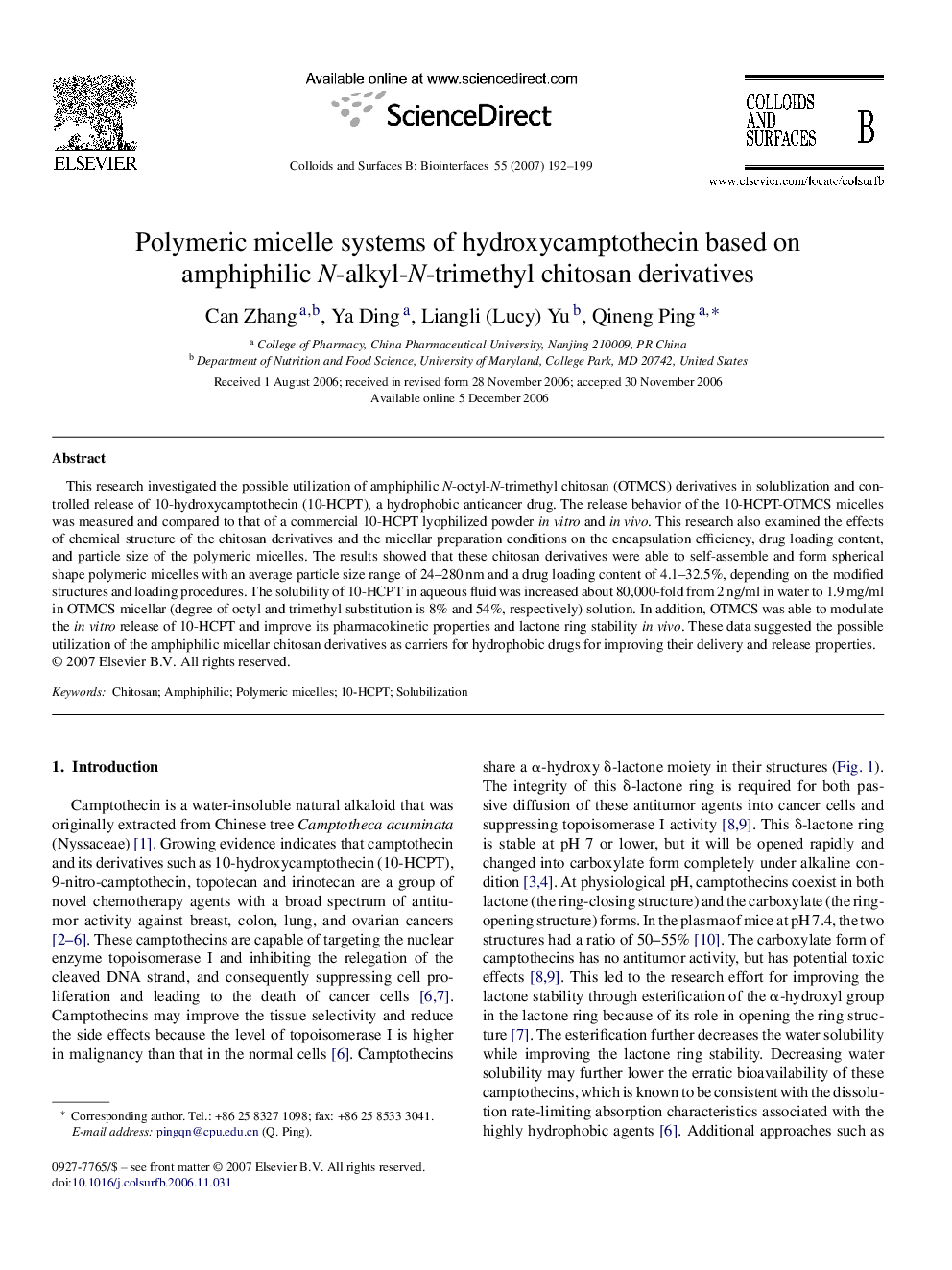| Article ID | Journal | Published Year | Pages | File Type |
|---|---|---|---|---|
| 602717 | Colloids and Surfaces B: Biointerfaces | 2007 | 8 Pages |
This research investigated the possible utilization of amphiphilic N-octyl-N-trimethyl chitosan (OTMCS) derivatives in solublization and controlled release of 10-hydroxycamptothecin (10-HCPT), a hydrophobic anticancer drug. The release behavior of the 10-HCPT-OTMCS micelles was measured and compared to that of a commercial 10-HCPT lyophilized powder in vitro and in vivo. This research also examined the effects of chemical structure of the chitosan derivatives and the micellar preparation conditions on the encapsulation efficiency, drug loading content, and particle size of the polymeric micelles. The results showed that these chitosan derivatives were able to self-assemble and form spherical shape polymeric micelles with an average particle size range of 24–280 nm and a drug loading content of 4.1–32.5%, depending on the modified structures and loading procedures. The solubility of 10-HCPT in aqueous fluid was increased about 80,000-fold from 2 ng/ml in water to 1.9 mg/ml in OTMCS micellar (degree of octyl and trimethyl substitution is 8% and 54%, respectively) solution. In addition, OTMCS was able to modulate the in vitro release of 10-HCPT and improve its pharmacokinetic properties and lactone ring stability in vivo. These data suggested the possible utilization of the amphiphilic micellar chitosan derivatives as carriers for hydrophobic drugs for improving their delivery and release properties.
